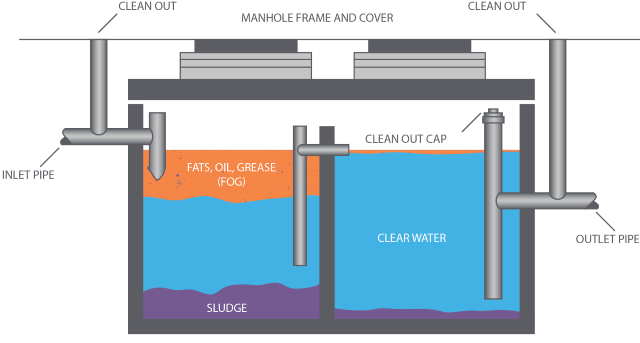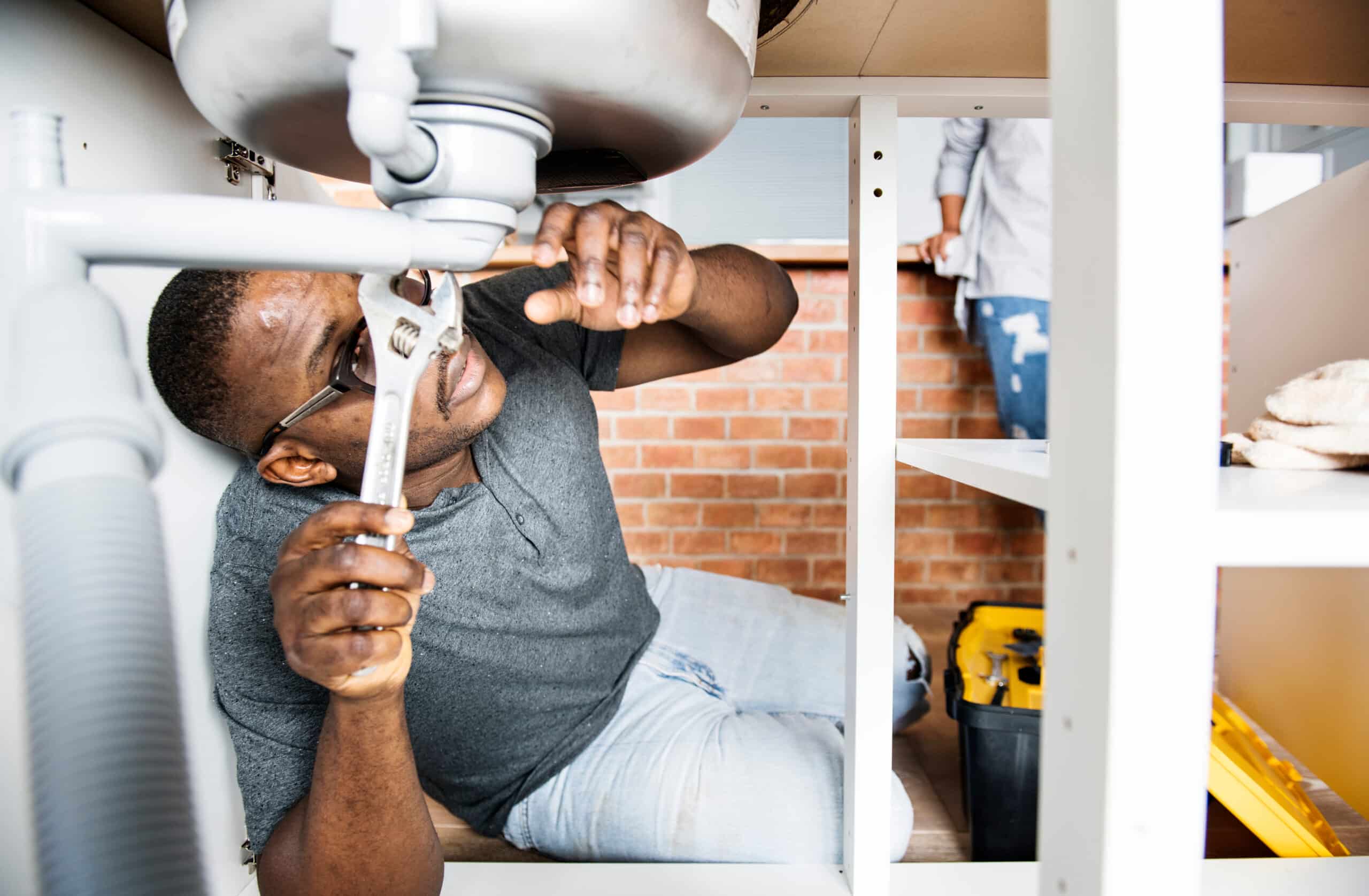Grease Trap Perth filter out residual fats, oils, and grease (FOG) materials from wastewater before they enter the local city sewage system. They also prevent these solids from clogging and causing drain backups or overflows.
Traditional passive systems work a little like large, in-ground tanks made from concrete, steel or fiberglass. Automatic systems, on the other hand, re-heat and skim FOG automatically on a programmed schedule based on usage.

How it works
In a nutshell, a grease trap is a receptacle that kitchen wastewater passes through before it enters the sewer waste system. It separates fats, oils and greases (FOGS) from the wastewater that comes from sinks, floor drains, and dishwashers. It allows the oil to float, while the solids sink to the bottom of the trap. The filtered wastewater then exits through the outlet pipe into the city’s sewer system.
During this process, the solids and FOG that float to the top of the trap must be removed regularly by either manual or automatic pumping. The trapped food solids must then be deposited in the garbage or food recycling bin, and the remaining wastewater fed into the normal septic system. There are a number of different designs of grease traps. Those that are more traditionally passive have a low upfront investment cost and can be installed unobtrusively underneath the sinks in most establishments. Those that are more advanced, such as high-efficiency grease interceptors (HGIs), require a little bit more initial expense but have a lower operating cost over time because they require less maintenance and pumping.
When sizing grease interceptors, it is important to take into consideration the amount of FOG that will be draining into them. It’s also important to follow the “1/4th rule,” which dictates that a grease trap should be cleaned out once it reaches a quarter of its full capacity. FOG can begin to smell and clog up drain lines if left unattended for too long, and it may cause the system to fail or the establishment to become noncompliant with local ordinances and regulations.
There are a few ways to install a grease trap, but it is recommended that an experienced plumbing professional be hired to do so. The proper installation and placement of the trap can help ensure it will be effective and safe to use, while minimizing maintenance and pumping costs. If a professional is not available, there are plenty of tutorials online and in plumbing magazines that can guide an owner through the DIY process.
Placement
Grease traps reduce the amount of fats, oils and grease (FOG) that is discharged into the sewer system. FOG can stick to the inside of sewer pipes and cause blockages, which can lead to costly sewage backups for restaurants and other businesses that prepare food items. For this reason, cities require that restaurants and other commercial properties install and regularly maintain properly-sized grease traps.
A grease interceptor (which can also be called a grease recovery device, a grease converter, or a sludge separator) works by slowing down the flow of wastewater in order to allow it to cool. The cooled water separates into layers, with the non-greasy liquids and solids falling to the bottom layer and the FOG floating on top. The cooler water -minus the grease- then flows into the main sewer.
Depending on the size of your restaurant, production volume and space constraints, you may need one or multiple grease traps. Smaller variations can be installed to connect individual sinks, while larger models are able to service entire kitchens.
Before you select a grease trap, make sure to check the local plumbing codes to ensure that yours will be suitable for your establishment. Then, purchase a trap that is the right size to fit into your sink drain. If your trap is too large, it will overflow and be ineffective.
Once you have your grease trap in place, it is important to attach it correctly and make the proper connections. The inlet and outlet ports should be attached with proper plumbing connectors, making sure to seal them well with plumber’s tape. Finally, test your trap by running water through the sink and ensuring that it is working as intended.
Once your trap is properly installed, it will need to be pumped on a regular basis. There are several options for this, including a “dry pump” option where the FOG is removed and hauled away with the gray water (but the trapped water remains in the tank), and a “wet” option where your service provider pumps and returns the captured grease with the water.
Maintenance
Grease traps need to be cleaned on a regular basis. A dirty grease trap can cause a host of problems for restaurant and kitchen owners, from unpleasant odors to expensive shut-downs. In addition, a blocked grease trap can lead to dangerous and unsanitary conditions. The best way to prevent these issues is to regularly clean the grease trap and ensure that it is emptied properly.
There are many different methods for cleaning a grease trap, and the type of cleanup required will vary depending on the type of food you serve and your kitchen’s productivity. However, some of the most important things you can do to maintain your grease trap are to minimize solid food waste that goes down the drain, rinsing greasy dishes with water, and using biodegradable soaps and detergents for kitchen cleaning. Keeping your trap clean will also help you avoid overflowing the system and costly blockages down the line.
If you are using a traditional passive hydromechanical system, your trap will need to be manually cleaned and pumped out on a regular basis. These systems can be found in a variety of sizes and are usually located under sinks in restaurants or other commercial establishments. They work on a simple design that dates back to 1885 and are still being used today. An alternative to the traditional passive system is the automated grease interceptor which re-heats and skims out FOG on a programmed schedule without the need for manual pumping. These systems are more efficient and have lower long term running and maintenance costs than traditional passive traps.
When it comes to choosing a service provider to handle your grease trap cleaning, be sure that they are licensed and insured and will take care of all of the paperwork involved in disposing of the removed material. This will ensure that the FOG isn’t illegally disposed of in a stream, river or other body of water where it can cause environmental problems. The professional you hire should also keep a record of all grease trap cleaning and removal services performed in case there are any problems or violations with local, state or federal regulations.
Cleaning
Grease traps should be cleaned on a consistent basis, typically every 90 days. This ensures that the trap is empty and clean, which in turn helps prevent clogs and allows FOG to flow into the sanitary sewer system properly. It is also important to keep in mind that there are regulations and codes that your restaurant must abide by regarding grease trap cleaning and management. Having your trap cleaned on a regular basis by the professionals keeps you in compliance and may help you avoid costly fines or replacement expenses down the road.
When it comes to cleaning your trap, there are several different methods that can be used. You should choose a service provider that offers the method that best suits your needs and the regulations in your area. Some popular options include pump and return and dry pumping. In the pump and return method, your service provider pumps out the fats, oils and grease from the trap and then returns the separated gray water back to the trap. This is a more environmentally friendly option, but it does require a specialized pumping vehicle. With the dry pump method, your service provider removes all of the waste material from the trap and hauls it away for disposal, leaving the trap empty and dry until it fills with FOG again.
If you choose to clean your trap yourself, it is important that you use metal buckets and a heavy-duty scooper to get the most efficient results. It is also a good idea to have one bucket for the waste and another for the water that you will be using for cleaning, as mixing the two can create a smelly and unsanitary mess. You should also have a utility sink nearby to wash your hands between handling the waste and the water.
Once you have removed the waste from the trap, you should use a shop vacuum to suck up any remaining bits of waste that are stuck in hard-to-reach places. Next, rinse the trap with soap and water to make sure it is completely clean. Finally, flush the trap with clean water to remove any leftover soap and debris.

